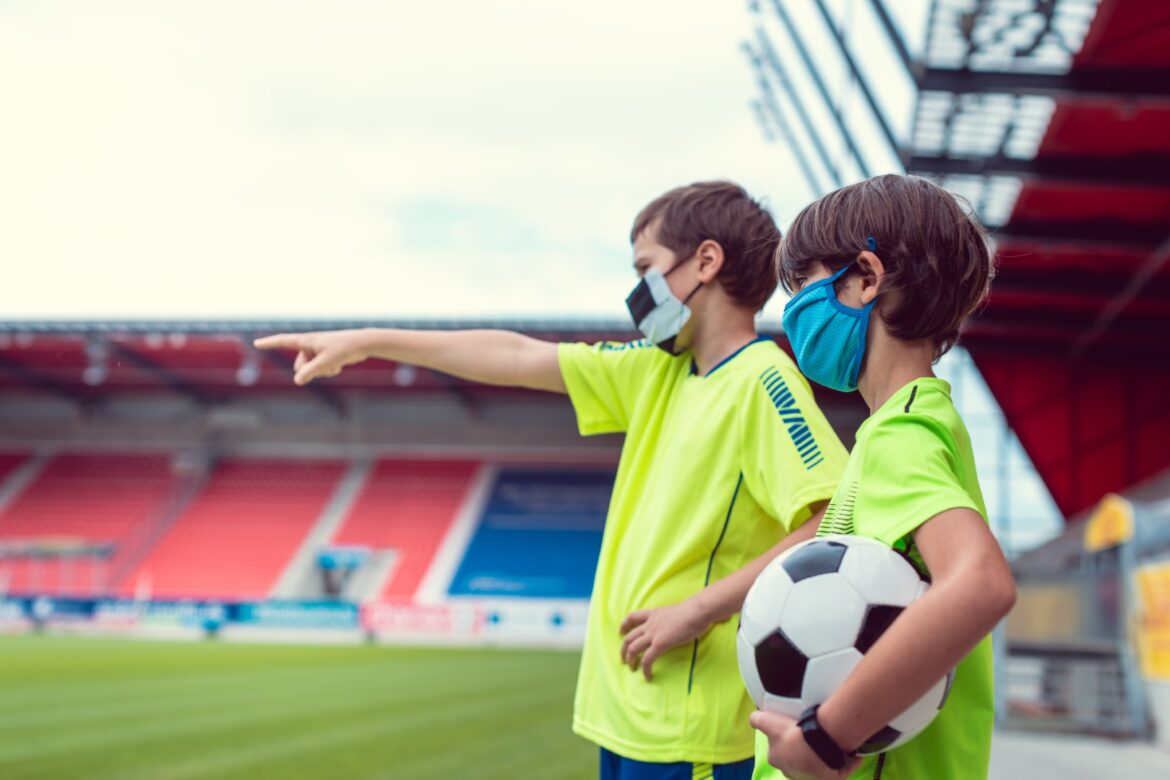The COVID-19 pandemic has had a major impact on professional sports around the world. Leagues and teams have had to navigate unprecedented challenges in order to keep players, coaches, and fans safe while still allowing for competition to continue. In this blog, we’ll take a look back at the impact of COVID-19 on professional sports in 2020 and 2021, and explore what the future might hold for the sports world in a post-pandemic era.
The Impact of COVID-19 on Professional Sports in 2020
The COVID-19 pandemic first hit the sports world in early 2020, when the NBA announced that it would suspend its season after Utah Jazz center Rudy Gobert tested positive for the virus. This set off a chain reaction of cancellations and suspensions across the sports world, with leagues such as the NHL, MLB, and MLS all postponing their seasons as well.

Eventually, many of these leagues were able to resume play by implementing strict health and safety protocols. These included regular testing of players and staff, strict quarantine measures, and limits on the number of fans in attendance. Despite these efforts, however, there were still numerous disruptions and setbacks throughout the year. For example, the MLB had to postpone multiple games due to positive COVID-19 tests among players and staff, while the NFL had to reschedule several games due to outbreaks on certain teams.
One of the most significant impacts of the pandemic on professional sports in 2020 was the lack of fan attendance at games. Many leagues either banned fans altogether or severely limited the number of spectators allowed, in order to reduce the risk of transmission. This had major financial implications for teams and leagues, which rely heavily on ticket sales and other in-person revenue streams.
The Impact of COVID-19 on Professional Sports in 2021
As the pandemic continued into 2021, professional sports continued to adapt and evolve. Many leagues were able to gradually increase the number of fans in attendance, as vaccination rates rose and health and safety protocols were refined. The NFL, for example, was able to allow a limited number of fans to attend the Super Bowl in February 2021.
However, there were still numerous challenges and setbacks throughout the year. The Tokyo Olympics, which were originally scheduled for 2020, were postponed until 2021 due to the pandemic. Even with the postponement, there were concerns about the safety of athletes and staff, and some countries ultimately decided not to send athletes to the games.
Additionally, the pandemic continued to have financial implications for teams and leagues. Many teams saw significant declines in revenue due to the lack of in-person attendance, and some were forced to make difficult decisions such as furloughing or laying off staff members.
Looking Ahead: The Future of Professional Sports in a Post-Pandemic World
As vaccination rates continue to rise and case numbers decline in many parts of the world, there is hope that professional sports will soon be able to return to some sense of normalcy. However, there are still many challenges and uncertainties that lie ahead.
One of the biggest challenges facing professional sports in a post-pandemic world is how to navigate the ongoing risks of the virus. While vaccines are highly effective, there is still a risk of breakthrough infections, and new variants of the virus continue to emerge. Leagues and teams will need to continue to implement health and safety protocols in order to keep players and staff safe, even as restrictions are lifted.
Another challenge will be rebuilding the financial stability of the sports world. Many teams and leagues have taken significant financial hits over the past year and a half, and it will take time to recover. There may be changes to the way sports are funded and structured in the future, in order to better prepare for unexpected disruptions such as a pandemic.
Finally, the pandemic has highlighted the need for greater diversity and inclusivity in the sports world. The pandemic disproportionately impacted marginalized communities, and there were calls for sports leagues to do more to support and uplift these communities. Additionally, the Black Lives Matter movement sparked conversations about racism and inequality in the sports world, and many athletes and teams have taken a more active role in advocating for social justice causes.

One area where the pandemic has accelerated change is in the use of technology in sports. With fans unable to attend games in person, many leagues and teams turned to virtual and augmented reality experiences in order to engage with fans and provide a more immersive viewing experience. For example, the NBA created a virtual fan experience, which allowed fans to appear on giant video boards during games. Additionally, some sports teams began using augmented reality to provide enhanced game coverage, such as showing virtual replays from different angles.
Looking ahead, it is likely that technology will continue to play an increasingly important role in the sports world. For example, virtual and augmented reality experiences could become a permanent fixture at games, providing fans with new ways to engage with their favorite teams and athletes. Additionally, advances in data analytics and artificial intelligence could lead to new innovations in sports performance and training, helping athletes to reach their full potential. In conclusion, the COVID-19 pandemic has had a significant impact on professional sports over the past two years. While there have been many challenges and setbacks, sports leagues and teams have shown remarkable resilience and adaptability in the face of adversity. As we look ahead to a post-pandemic world, there are still many uncertainties and challenges that lie ahead, but there is also reason for hope and optimism. With continued innovation and a commitment to inclusivity and social justice, the sports world can emerge from the pandemic stronger and more resilient than ever before.

